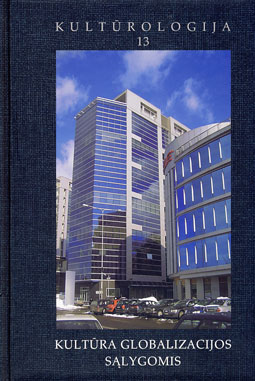Elektroninis menas Lietuvoje, Latvijoje ir Estijoje: globalūs procesai ir lokalios iniciatyvos
Electronic Art in Lithuania, Latvia and Estonia: Global Processes and Local Initiatives
Author(s): Renata ŠukaitytėSubject(s): Cultural Essay, Political Essay, Societal Essay
Published by: Lietuvos kultūros tyrimų
Keywords: Lithuania; the Baltic States; electronic art; media culture; media laboratory; network
Summary/Abstract: The article discusses the possible influence that various inner and outer factors such as national and regional cultural policies, strategies of international and national cultural foundations, networking practices, mobility, and liberalization of cultural space, development of ICT sector and growth of information society can have on actors operating in various media culture layers. In the article a big importance is given to the analysis of networking practices and trials to create a backbone for the collaboration of new media culture centers in the Baltic Sea region as well as Northern Europe. The text focuses on the analysis of related to media culture initiatives of public institutions, cultural organizations and communities as well as individuals. Electronic media art began to appear in Lithuania, Latvia and Estonia in the mid-1990s, but the preconditions for the development of this art form existed earlier, in the interdisciplinary projects, mail art, light installation and video art practices of the second half of the 1980s. That period witnessed active attempts at establishing a neo-avantgarde in the audiovisual and visual arts, along with the beginnings of interdisciplinary and subversive artistic strategies and the emergence of a specific language and discourse for media art. The political, economic and sociocultural changes that took place in the country during the 1990s were significant for the development of this new generation of art: the restoration of independence and the integration into an international sphere of politics and culture, the development of a free market economy, of information and consumerist society, as well as the modernisation of cultural institutions and increased artist mobility. Thought, the Baltic States faced very similar economical and political, cultural problems and the starting point for the development of electronic art was almost analogous it evolved in quite different directions and in different speed, especially this is notable in the strategies of culture institutions, international networking practices and the development of critical electronic culture discourses in events and various media. The process of ICT adaptation into art and culture sector in Central and Eastern Europe started only after the fall of the Berlin summaries Wall and increased with the integration into EU. A significant role for media art development and integration into Western art space played the chain of NVO, so called Open Society Institutes established in the former soviet countries by American philanthropist Georges Soros. Especially important were Internet and Looking Inside programs as well as initiatives of Soros Contemporary Art Centers (SCCA). In the beginning of the 90s Soros Foundations were the only sources for culture and art funding in the region...
Journal: Kultūrologija
- Issue Year: 2006
- Issue No: 13
- Page Range: 48-75
- Page Count: 27
- Language: Lithuanian

